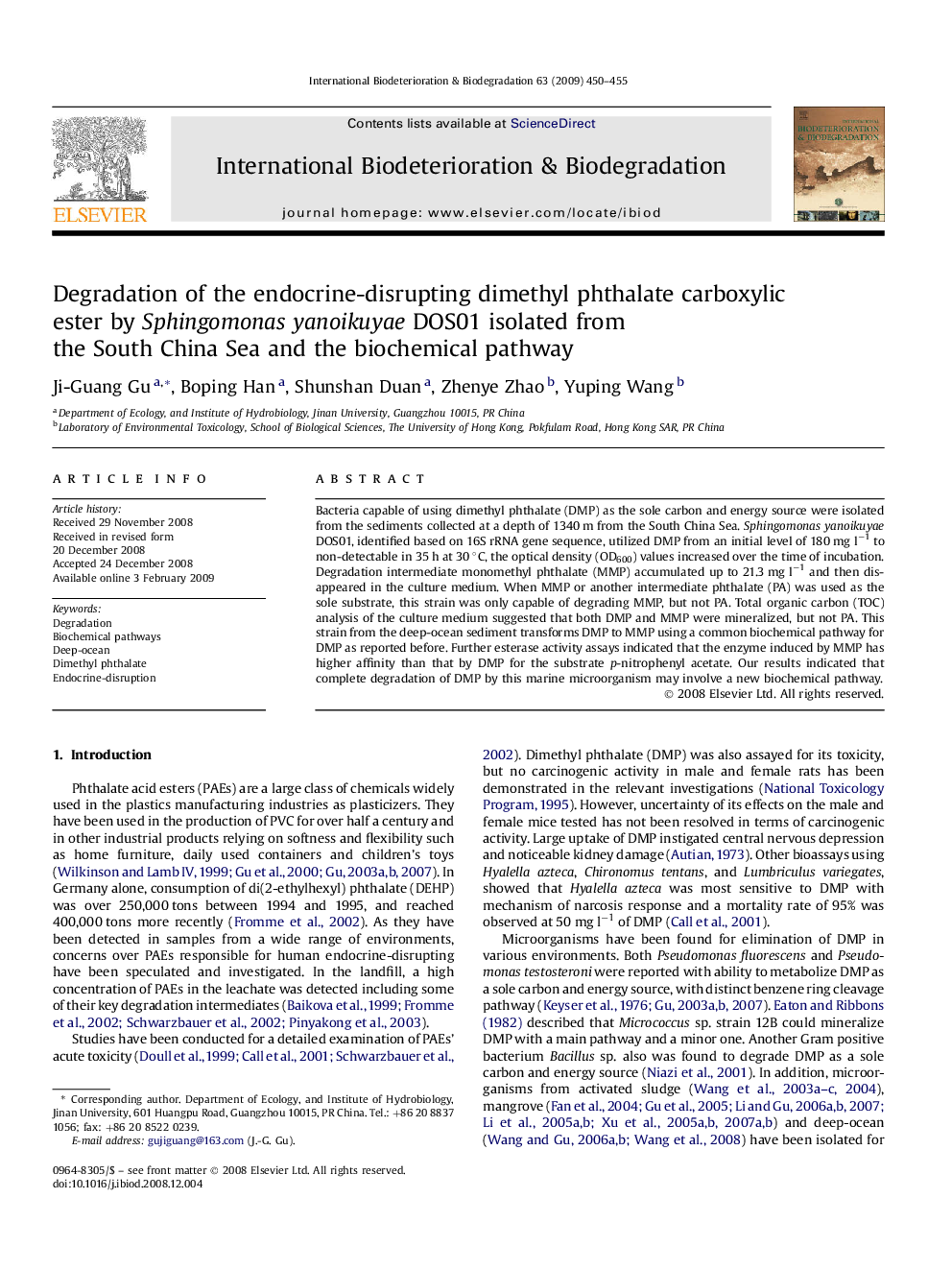| کد مقاله | کد نشریه | سال انتشار | مقاله انگلیسی | نسخه تمام متن |
|---|---|---|---|---|
| 4365411 | 1301758 | 2009 | 6 صفحه PDF | دانلود رایگان |

Bacteria capable of using dimethyl phthalate (DMP) as the sole carbon and energy source were isolated from the sediments collected at a depth of 1340 m from the South China Sea. Sphingomonas yanoikuyae DOS01, identified based on 16S rRNA gene sequence, utilized DMP from an initial level of 180 mg l−1 to non-detectable in 35 h at 30 °C, the optical density (OD600) values increased over the time of incubation. Degradation intermediate monomethyl phthalate (MMP) accumulated up to 21.3 mg l−1 and then disappeared in the culture medium. When MMP or another intermediate phthalate (PA) was used as the sole substrate, this strain was only capable of degrading MMP, but not PA. Total organic carbon (TOC) analysis of the culture medium suggested that both DMP and MMP were mineralized, but not PA. This strain from the deep-ocean sediment transforms DMP to MMP using a common biochemical pathway for DMP as reported before. Further esterase activity assays indicated that the enzyme induced by MMP has higher affinity than that by DMP for the substrate p-nitrophenyl acetate. Our results indicated that complete degradation of DMP by this marine microorganism may involve a new biochemical pathway.
Journal: International Biodeterioration & Biodegradation - Volume 63, Issue 4, June 2009, Pages 450–455